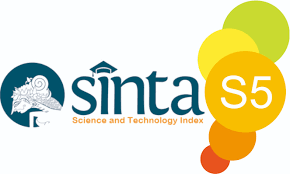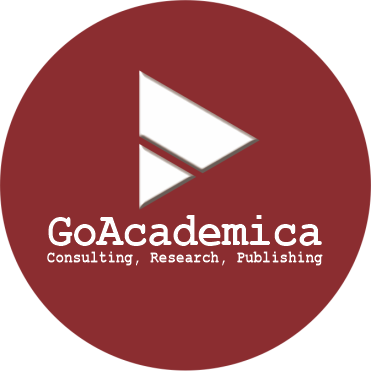PENGARUH HUMAN CAPITAL, TALENT MANAGEMENT TERHADAP ORGANIZATIONAL PERFORMANCE YANG DI MEDIASI OLEH ORGANIZATIONAL INNOVATION PADA BANK BCA DI JAKARTA
Keywords:
Human Capital, Talent Management, Organizational Performance, Organizational Innovation, Bank BCA di Jakarta
Abstract
Penelitian ini bertujuan untuk menganalisis pengaruh Human Capital dan Talent Management terhadap Organizational Performance dengan mediasi Organizational Innovation. Studi ini melibatkan 215 responden yang merupakan karyawan Bank BCA di Jakarta, dengan mayoritas responden berjenis kelamin wanita, berusia 20–30 tahun, berpendidikan D3/S1, dan memiliki pengalaman kerja 1–5 tahun. Penelitian menguji tujuh hipotesis dengan hasil yang bervariasi. Human Capital terbukti memiliki pengaruh positif signifikan terhadap Organizational Innovation, tetapi tidak berpengaruh signifikan terhadap Organizational Performance, baik secara langsung maupun melalui mediasi Organizational Innovation. Talent Management juga memiliki pengaruh positif signifikan terhadap Organizational Innovation, namun tidak berpengaruh signifikan terhadap Organizational Performance, baik secara langsung maupun melalui mediasi Organizational Innovation. Selain itu, Organizational Innovation sendiri tidak memiliki pengaruh signifikan terhadap Organizational Performance. Temuan ini menunjukkan bahwa meskipun Human Capital dan Talent Management berkontribusi terhadap inovasi organisasi, keduanya tidak secara langsung maupun tidak langsung meningkatkan kinerja organisasi. Studi ini memberikan wawasan penting bagi pengelolaan sumber daya manusia, khususnya dalam konteks perbankan, serta menekankan pentingnya mengevaluasi kembali peran inovasi organisasi dalam mendukung kinerja organisasi.References
Abbas, A., Jamil, S., & Shahid, M. (2018). Human capital and innovation: Key drivers of organizational performance. International Journal of Business Innovation.
Agus Dwiyanto, et al. (2008). Performance measurement in public sector organizations. Journal of Public Administration.
Almutirat, N. (2022). Enhancing organizational capabilities through talent management. Journal of Management Studies.
Alnoor, A. (2020). The impact of human capital on organizational efficiency in SMEs. Middle East Journal of Business and Economics.
AlQershi, N. A., Mokhtar, S. S. M., & Abas, Z. B. (2022). "CRM Dimensions and Performance of SMEs in Yemen: The Moderating Role of Human Capital." Journal of Intellectual Capital, 23(3), 516-537. DOI:10.1108/JIC-05-2020-0175.
Amabile, T. M. (2012). Componential theory of creativity and innovation. Harvard Business Review.
Becker, G. S. (1964). Human capital: A theoretical and empirical analysis with special reference to education. University of Chicago Press.
Becker, G. S. (1993). Human capital revisited: Education and income. Journal of Economics.
Braunerhjelm, P., & Lappi, E. (2023). Innovation-driven organizational growth in competitive markets. Journal of Organizational Studies.
Chen, W. C., Lin, Y. T., & Chang, P. Y. (2021). Human capital investments in Taiwanese industries. Taiwan Economic Review.
Collings, D. G., & Mellahi, K. (2009). Strategic talent management: A review and research agenda. Human Resource Management Review, 19(4), 304-313.
Dorasamy, N. (2021). "Talent Management Strategies for Public Service Delivery in Africa." Journal of Public Administration, 56(2), 207-225. DOI:10.1080/0075093012021.
Endri. (2010). Peran Human Capital dalam Meningkatkan Kinerja Perusahaan: Suatu Tinjauan Teoritis dan Empiris. Jurnal Administrasi Bisnis, 6(2), 179-190. ABFI Institute Perbanas. https://doi.org/10.1234/jab.2010.062179
Fitz-Enz, J. (2004). The ROI of human capital: Measuring the economic value of employee performance. AMACOM.
Guest, D.E., Michie, J., Conway, N., & Sheehan, M. (2003). Human resource management and corporate performance in the UK. British Journal of Industrial Relations, 41, 291-314.
Hair, J. F., Black, W. C., Babin, B. J., & Anderson, R. E. (2019). Multivariate data analysis (8th ed.). Pearson Education.
Hair, J. F., Black, W. C., Babin, B. J., & Anderson, R. E. (2022). Structural equation modeling: Concepts and applications. Sage Publications.
Henderson, R., & Clark, K. (1990). Architectural innovation: The reconfiguration of existing product technologies and the failure of established firms. Administrative Science Quarterly.
Hu, L., Zhao, Q., & Zhang, Y. (2023). Adaptive human resource strategies for competitive landscapes. Asian Journal of Business Research.
Jimenez-Jimenez, D., & Sanz-Valle, R. (2008). The effects of innovation on firm performance. International Journal of Business Innovation.
Lewis, R. E., & Heckman, R. J. (2006). Talent management: A critical review. Human Resource Management Review, 16(2), 139-154.
Lopez-Cabrales, A., Pérez-Luño, A., & Valle-Cabrera, R. (2009). Talent management and organizational learning: A resource-based view. Journal of Human Resource Management.
Masyhuri, A., Putra, D., & Kusuma, R. (2024). Human capital and its impact on organizational performance in service industries. Journal of Economics and Management.
Mihardjo, L. W., Jermsittiparsert, K., Ahmed, U., Chankoson, T., & Iqbal Hussain, H. (2021). "Impact of Key HR Practices (Human Capital, Training and Rewards) on Service Recovery Performance with Mediating Role of Employee Commitment of the Takaful Industry of the Southeast Asian Region." Education + Training, 63(1), 1-21. DOI:10.1108/ET-08-2019-0188.
Montenegro, C. E., & Patrinos, H. A. (2020). Returns to education and human capital development. World Bank Policy Research Papers.
Parveen, F., Jaafar, N. I., & Ainin, S. (2015). Social media usage and organizational performance: Reflections of Malaysian social media managers. Telematics and Informatics, 32(1), 67-78. https://doi.org/10.1016/j.tele.2014.03.001.
Rahman, S. (2023). Linking innovation with business performance: A conceptual framework. Business Performance Review.
Samad, S. (2020). "Achieving Innovative Firm Performance through Human Capital and the Effect of Social Capital." Management & Marketing, 15(2), 326-344. DOI:10.2478/mmcks-2020-0019.
Samson, D., & Bhanugopan, R. (2022). Global talent management: Trends and challenges. International Journal of Global Management.
Scullion, H., Collings, D. G., & Caligiuri, P. (2010). Global talent management. Journal of World Business, 45(2), 105-108.
Setyanto, D., & Rachmawati, S. (2004). Human capital as an asset for business success. Indonesia Management Journal.
Sharma, N., et al. (2020). Measuring the role of organizational innovation in competitive industries. Innovation and Technology Review.
Tran, H. T., Pham, L. D., & Nguyen, T. T. (2020). Human capital and organizational performance in Vietnam. Asia Pacific Management Journal.
Wang, J., & Zatzick, C. D. (2019). Recruitment strategies for organizational innovation. Journal of Human Resources Management.
Zameer, H., Nawaz, M. Z., & Ahmed, Z. (2020). The Role of Human Capital in Organizational Innovation: A Comparative Study. Springer.
Agus Dwiyanto, et al. (2008). Performance measurement in public sector organizations. Journal of Public Administration.
Almutirat, N. (2022). Enhancing organizational capabilities through talent management. Journal of Management Studies.
Alnoor, A. (2020). The impact of human capital on organizational efficiency in SMEs. Middle East Journal of Business and Economics.
AlQershi, N. A., Mokhtar, S. S. M., & Abas, Z. B. (2022). "CRM Dimensions and Performance of SMEs in Yemen: The Moderating Role of Human Capital." Journal of Intellectual Capital, 23(3), 516-537. DOI:10.1108/JIC-05-2020-0175.
Amabile, T. M. (2012). Componential theory of creativity and innovation. Harvard Business Review.
Becker, G. S. (1964). Human capital: A theoretical and empirical analysis with special reference to education. University of Chicago Press.
Becker, G. S. (1993). Human capital revisited: Education and income. Journal of Economics.
Braunerhjelm, P., & Lappi, E. (2023). Innovation-driven organizational growth in competitive markets. Journal of Organizational Studies.
Chen, W. C., Lin, Y. T., & Chang, P. Y. (2021). Human capital investments in Taiwanese industries. Taiwan Economic Review.
Collings, D. G., & Mellahi, K. (2009). Strategic talent management: A review and research agenda. Human Resource Management Review, 19(4), 304-313.
Dorasamy, N. (2021). "Talent Management Strategies for Public Service Delivery in Africa." Journal of Public Administration, 56(2), 207-225. DOI:10.1080/0075093012021.
Endri. (2010). Peran Human Capital dalam Meningkatkan Kinerja Perusahaan: Suatu Tinjauan Teoritis dan Empiris. Jurnal Administrasi Bisnis, 6(2), 179-190. ABFI Institute Perbanas. https://doi.org/10.1234/jab.2010.062179
Fitz-Enz, J. (2004). The ROI of human capital: Measuring the economic value of employee performance. AMACOM.
Guest, D.E., Michie, J., Conway, N., & Sheehan, M. (2003). Human resource management and corporate performance in the UK. British Journal of Industrial Relations, 41, 291-314.
Hair, J. F., Black, W. C., Babin, B. J., & Anderson, R. E. (2019). Multivariate data analysis (8th ed.). Pearson Education.
Hair, J. F., Black, W. C., Babin, B. J., & Anderson, R. E. (2022). Structural equation modeling: Concepts and applications. Sage Publications.
Henderson, R., & Clark, K. (1990). Architectural innovation: The reconfiguration of existing product technologies and the failure of established firms. Administrative Science Quarterly.
Hu, L., Zhao, Q., & Zhang, Y. (2023). Adaptive human resource strategies for competitive landscapes. Asian Journal of Business Research.
Jimenez-Jimenez, D., & Sanz-Valle, R. (2008). The effects of innovation on firm performance. International Journal of Business Innovation.
Lewis, R. E., & Heckman, R. J. (2006). Talent management: A critical review. Human Resource Management Review, 16(2), 139-154.
Lopez-Cabrales, A., Pérez-Luño, A., & Valle-Cabrera, R. (2009). Talent management and organizational learning: A resource-based view. Journal of Human Resource Management.
Masyhuri, A., Putra, D., & Kusuma, R. (2024). Human capital and its impact on organizational performance in service industries. Journal of Economics and Management.
Mihardjo, L. W., Jermsittiparsert, K., Ahmed, U., Chankoson, T., & Iqbal Hussain, H. (2021). "Impact of Key HR Practices (Human Capital, Training and Rewards) on Service Recovery Performance with Mediating Role of Employee Commitment of the Takaful Industry of the Southeast Asian Region." Education + Training, 63(1), 1-21. DOI:10.1108/ET-08-2019-0188.
Montenegro, C. E., & Patrinos, H. A. (2020). Returns to education and human capital development. World Bank Policy Research Papers.
Parveen, F., Jaafar, N. I., & Ainin, S. (2015). Social media usage and organizational performance: Reflections of Malaysian social media managers. Telematics and Informatics, 32(1), 67-78. https://doi.org/10.1016/j.tele.2014.03.001.
Rahman, S. (2023). Linking innovation with business performance: A conceptual framework. Business Performance Review.
Samad, S. (2020). "Achieving Innovative Firm Performance through Human Capital and the Effect of Social Capital." Management & Marketing, 15(2), 326-344. DOI:10.2478/mmcks-2020-0019.
Samson, D., & Bhanugopan, R. (2022). Global talent management: Trends and challenges. International Journal of Global Management.
Scullion, H., Collings, D. G., & Caligiuri, P. (2010). Global talent management. Journal of World Business, 45(2), 105-108.
Setyanto, D., & Rachmawati, S. (2004). Human capital as an asset for business success. Indonesia Management Journal.
Sharma, N., et al. (2020). Measuring the role of organizational innovation in competitive industries. Innovation and Technology Review.
Tran, H. T., Pham, L. D., & Nguyen, T. T. (2020). Human capital and organizational performance in Vietnam. Asia Pacific Management Journal.
Wang, J., & Zatzick, C. D. (2019). Recruitment strategies for organizational innovation. Journal of Human Resources Management.
Zameer, H., Nawaz, M. Z., & Ahmed, Z. (2020). The Role of Human Capital in Organizational Innovation: A Comparative Study. Springer.
Published
2024-12-30
How to Cite
Yeny Rahman Putri Lawati, & Dita Oki Berliyanti. (2024). PENGARUH HUMAN CAPITAL, TALENT MANAGEMENT TERHADAP ORGANIZATIONAL PERFORMANCE YANG DI MEDIASI OLEH ORGANIZATIONAL INNOVATION PADA BANK BCA DI JAKARTA. Journal of Social and Economics Research, 6(2), 873-890. https://doi.org/10.54783/jser.v6i2.691
Section
Articles



















